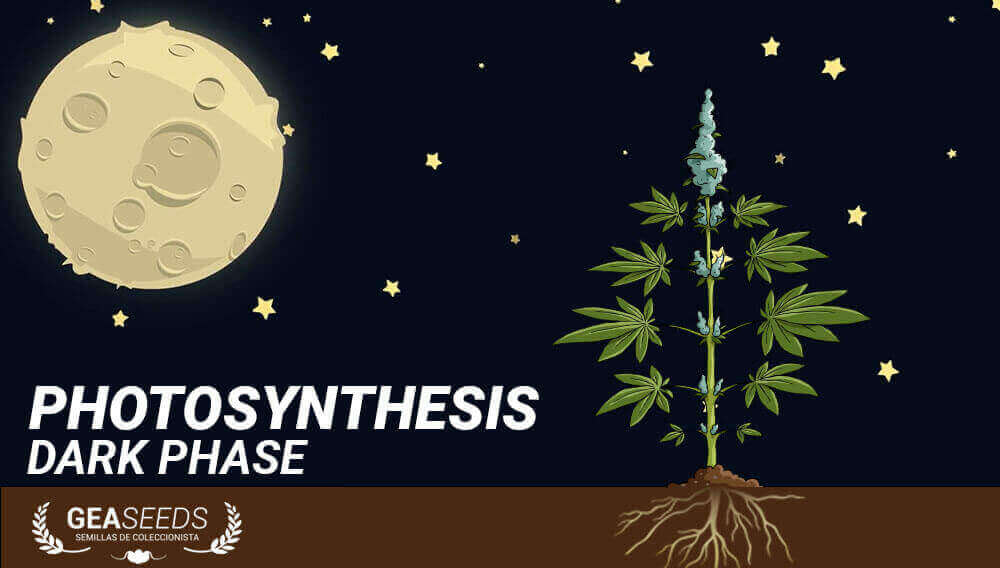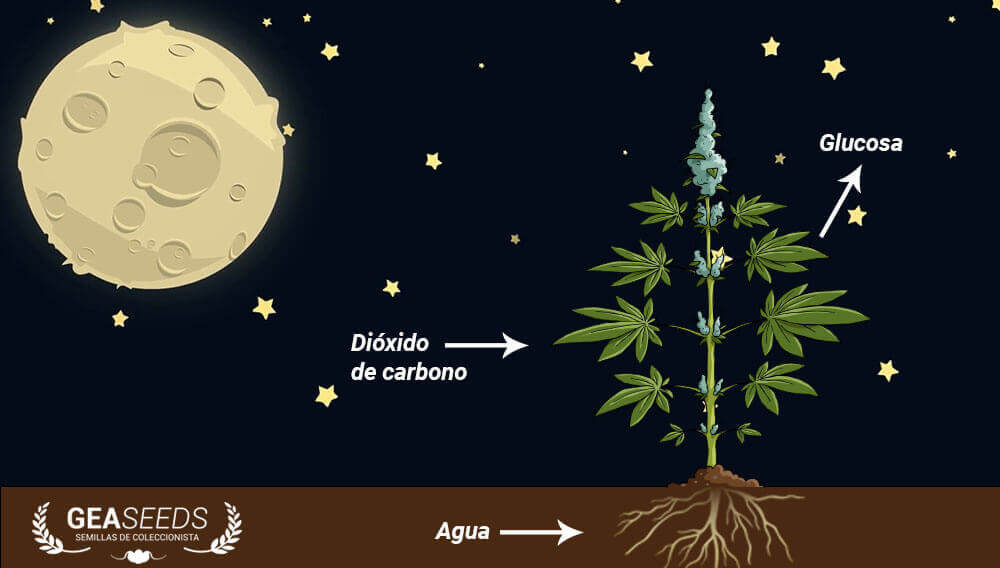This post is Luminous stage photosynthesis follow-up; as previously mentioned, photosynthesis is divided into three stages: luminous, dark and photorespiration.
In the first post, we analyzed the general photosynthesis process and, then, we synthesized luminous stage processes; now, we provide a precise summary on the second stage (dark stage).
1. Dark stagea
Dark stage, also known as biosynthetic or assimilatory, is the second stage in photosynthesis; in this stage, a cluster of reactions – solar light is not needed – is produced, and they convert carbon dioxide – among other complexes – into sugars. Dark stage in plants – and marijuana plants – does not need direct solar light, although it is indirectly regulated by solar light, since some enzymes involved in carbon assimilation process depend on solar light.

dark phase photosynthesis
Basically, plants absorb air CO2 through leave stromas; then, carbon is reduced cyclically in the chloroplast stroma, process known as Calvin Cycle: in order to produce these reactions, plants obtain luminous stage products – ATP and NADPH.
Dark stage is divided into carbon fixation and Calvin Cycle.
2. Carbon fixation
This is the first step in dark stage – carbon is fixed; in this step, carbon from atmospheric CO2 is fixed in a carbohydrate: for that, there are three levels – C3 carbon fixation, C4 carbon fixation and CAM. Now, we analyze them:
– C3 carbon fixation: CO2 is fixed directly in Calvin Cycle, without any previous fixations; scientific research shows that RuBiCO enzyme catalyzes the reaction between ribulose-1, 5-biphosphate and CO2: a six-carbon molecule is created, separated into two phosphoglycerate molecules with three carbon atoms.
– C4 carbon fixation: before CO2 enters Calvin Cycle, it reacts with phosphoenolpyruvate and it produces oxaloacetate, subsequently converted into malate – a 4-carbon molecule; then, malate is transported to the cells, being decarboxylized to produce the CO2 required in Calvin Cycle.

dark photosynthesis
– Carbon fixation in CAM plants: similar to C4, but it is produced in crassulaceae; these plants close their stomas during the day and they cannot absorb CO2, so they absorb CO2 at night to enable photosynthesis, transforming it into malate and supplying it during the day, for the plant to deal with Calvin Cycle.
3. Calvin Cycle
Calvin Cycle is the process for the plants to incorporate carbon dioxide to ribulose 1, 5-biphosphate: a molecule net of glucose, being a carbon source and providing the required energy for the plant to deal with the required vitar processes; then, the energy is stored in glucose organic molecules. All these reactions do not depend directly on solar radiation.

calvin cycle
Next photosynthesis post will focus on the last stage, photorespiration. We wish the post has resolved your doubts; otherwise, just leave your comment and we will try to clarify any question as soon as possible.



